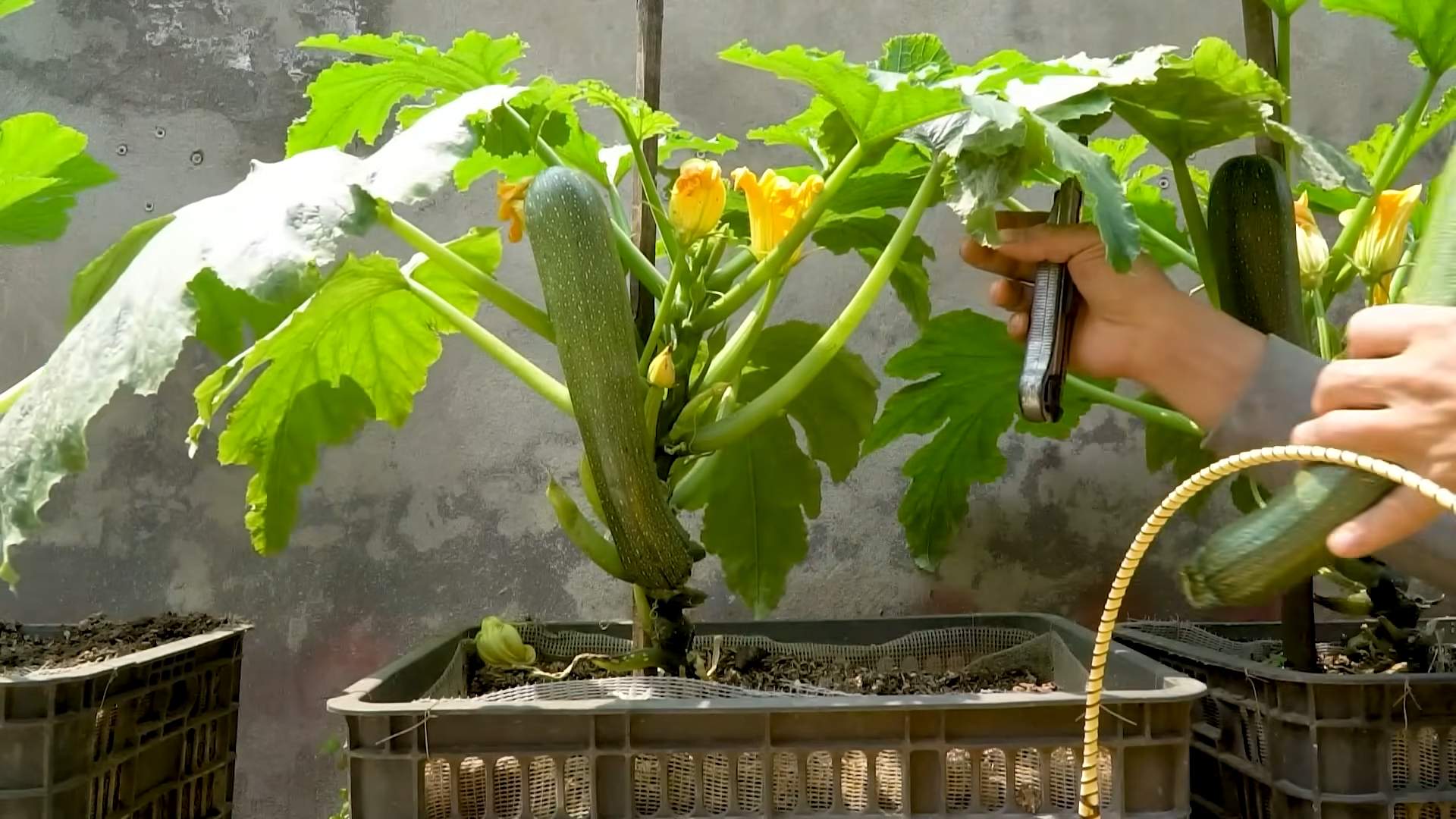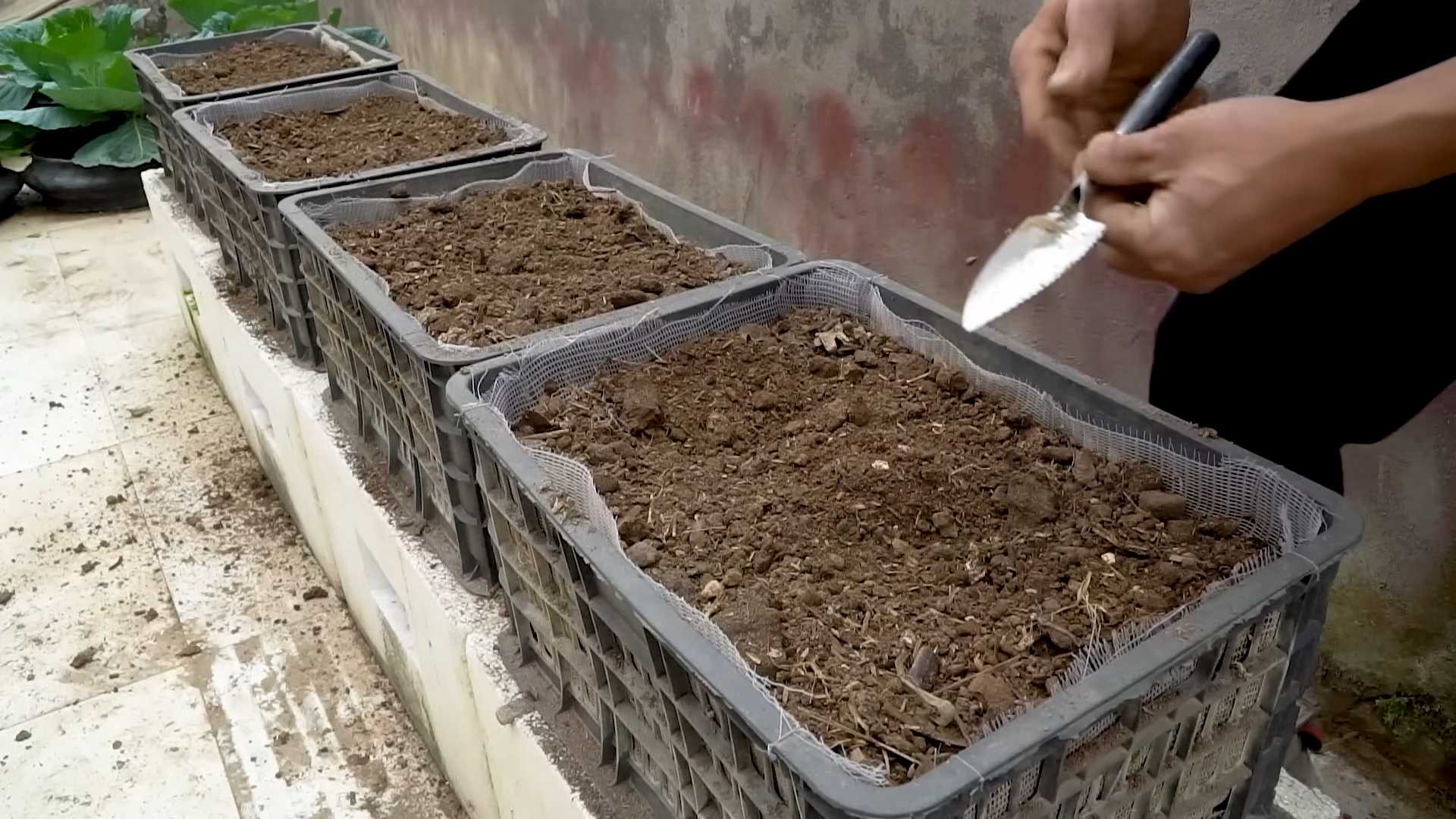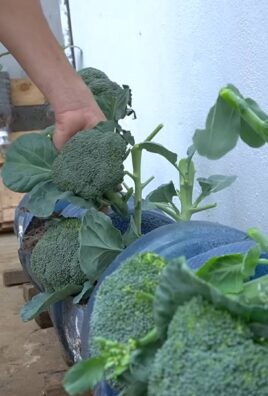Zucchini plant high yield, ah, the gardener’s dream! Imagine baskets overflowing with glossy, green zucchini, ready for everything from delicious zucchini bread to savory summer stir-fries. It’s a beautiful vision, isn’t it? But sometimes, our zucchini plants seem to have other plans, producing only a few fruits or even none at all. That’s where these DIY tricks and hacks come in – I’m here to help you turn that dream into a reality!
Zucchini, a member of the squash family, has been cultivated for centuries, with its origins tracing back to Central and South America. It wasn’t until the late 19th century that Italian immigrants introduced it to the United States, where it quickly became a garden staple. Today, zucchini is celebrated for its versatility and nutritional value, but achieving a truly bountiful harvest can sometimes feel like a challenge.
Why do you need these DIY tricks? Because a zucchini plant high yield isn’t just about luck; it’s about understanding your plant’s needs and providing the right conditions for it to thrive. Whether you’re dealing with pollination problems, nutrient deficiencies, or simply want to maximize your plant’s potential, these simple, actionable tips will empower you to grow more zucchini than you ever thought possible. I’m excited to share these secrets with you, so let’s get started and transform your garden into a zucchini paradise!

Maximizing Your Zucchini Harvest: A DIY Guide to Bumper Crops
Okay, zucchini lovers, let’s talk about getting serious about our zucchini game! We all know the feeling – one minute you have a cute little plant, the next you’re drowning in green squash. But what if you could *control* that abundance and ensure a consistently high yield of delicious, healthy zucchini all season long? Well, my friends, you can! This guide is packed with DIY tips and tricks I’ve learned over the years to help you achieve zucchini nirvana.
Understanding Zucchini Needs: The Foundation for Success
Before we dive into the hacks, let’s quickly cover the basics. Zucchini plants are hungry, thirsty, and sun-loving creatures. Neglecting these needs will significantly impact your yield.
* Sunlight: Zucchini needs at least 6-8 hours of direct sunlight per day.
* Water: Consistent watering is crucial, especially during fruiting. Aim for deep watering a few times a week rather than shallow watering daily.
* Soil: Well-draining soil rich in organic matter is ideal.
* Fertilizer: Zucchini are heavy feeders. Regular fertilization is essential.
* Pollination: Zucchini relies on pollination to produce fruit.
DIY Hack #1: Supercharging Your Soil with Compost Tea
Compost tea is like a magic potion for your zucchini plants. It’s packed with beneficial microbes and nutrients that will boost growth and fruit production. Plus, it’s super easy (and cheap!) to make.
Materials You’ll Need:
* Aerate compost (worm castings are amazing, but any good quality compost will do)
* A 5-gallon bucket
* An aquarium air pump and air stone
* Unchlorinated water (let tap water sit out for 24 hours to dechlorinate)
* Molasses (optional, but it feeds the microbes)
* A porous bag (like a paint strainer bag or cheesecloth)
Step-by-Step Instructions:
1. Fill the Bucket: Fill the 5-gallon bucket with unchlorinated water, leaving a few inches at the top.
2. Add Compost: Place about 1-2 cups of compost into the porous bag and tie it closed.
3. Submerge the Bag: Suspend the bag of compost in the water. You can use a stick or clothespin to hold it in place.
4. Aerate: Place the air stone at the bottom of the bucket and connect it to the air pump. Turn on the air pump. The bubbling action is crucial for aerating the tea and promoting microbial growth.
5. Add Molasses (Optional): If using, add 1 tablespoon of molasses to the water. This will feed the beneficial microbes and help them multiply.
6. Brew: Let the tea brew for 24-48 hours, stirring occasionally. The tea should have a slightly earthy smell.
7. Strain: Remove the compost bag and strain the tea through a fine-mesh strainer or cheesecloth to remove any large particles.
8. Dilute: Dilute the compost tea with water to a ratio of 1:10 (1 part tea to 10 parts water).
9. Apply: Water your zucchini plants with the diluted compost tea every 1-2 weeks. You can also use it as a foliar spray, but be sure to spray in the early morning or late evening to avoid burning the leaves.
DIY Hack #2: Hand-Pollination for Guaranteed Fruit Set
Sometimes, even with plenty of bees buzzing around, zucchini plants struggle to get properly pollinated. This can lead to small, misshapen fruit that rots before it matures. Hand-pollination is a simple way to ensure successful fruit set.
Understanding Zucchini Flowers:
Zucchini plants have separate male and female flowers. Male flowers have a long, thin stem, while female flowers have a small, immature zucchini fruit at the base.
Step-by-Step Instructions:
1. Identify Male and Female Flowers: Look for open male and female flowers on your zucchini plant. The best time to hand-pollinate is in the early morning when the flowers are fully open.
2. Collect Pollen: Gently pluck a male flower from the plant. Remove the petals to expose the stamen (the pollen-bearing part).
3. Transfer Pollen: Gently rub the stamen of the male flower onto the stigma (the sticky part) of the female flower. Make sure to cover the stigma with pollen.
4. Mark the Pollinated Flower (Optional): You can use a small piece of ribbon or tape to mark the pollinated flower. This will help you track which flowers you’ve already pollinated.
5. Repeat: Repeat the process for all open female flowers.
DIY Hack #3: Pruning for Airflow and Sunlight Penetration
Pruning zucchini plants can seem counterintuitive, but it’s actually a great way to improve airflow, increase sunlight penetration, and encourage more fruit production.
What to Prune:
* Yellowing or Damaged Leaves: Remove any leaves that are yellowing, browning, or damaged. These leaves are no longer contributing to the plant’s health and can attract pests and diseases.
* Overcrowded Leaves: If the plant is very dense, remove some of the larger leaves to improve airflow and sunlight penetration. Focus on removing leaves that are blocking sunlight from reaching the developing fruits.
* Old Leaves at the Base: Remove older leaves at the base of the plant. These leaves are often shaded and can become a breeding ground for pests and diseases.
How to Prune:
1. Use Clean Tools: Use sharp, clean pruning shears or scissors to avoid spreading diseases.
2. Cut at the Base: Cut the leaves off at the base of the stem, close to the main stalk of the plant.
3. Dispose of Debris: Dispose of the pruned leaves properly to prevent the spread of pests and diseases.
DIY Hack #4: Companion Planting for Pest Control and Enhanced Growth
Companion planting is the practice of planting different plants together to benefit each other. Certain plants can repel pests, attract beneficial insects, or improve soil conditions for zucchini.
Good Companion Plants for Zucchini:
* Marigolds: Marigolds repel nematodes and other pests.
* Nasturtiums: Nasturtiums attract aphids away from zucchini plants.
* Garlic: Garlic repels a variety of pests.
* Onions: Onions also repel pests.
* Beans: Beans fix nitrogen in the soil, which benefits zucchini plants.
* Radishes: Radishes deter squash vine borers.
How to Implement Companion Planting:
Simply plant these companion plants around your zucchini plants. You can plant them in the same garden bed or in nearby containers.
DIY Hack #5: Vertical Growing for Space Saving and Improved Airflow
If you’re short on space, or if you just want to improve airflow around your zucchini plants, consider growing them vertically.
Methods for Vertical Growing:
* Trellis: Train your zucchini plants to grow up a trellis. You can use a wooden trellis, a metal trellis, or even a simple fence.
* Cages: Use tomato cages to support the plants as they grow.
* DIY Structures: Get creative and build your own vertical growing structures using materials like bamboo poles, netting, or recycled materials.
How to Train Zucchini Plants Vertically:
1. Provide Support: Set up your chosen vertical support structure near your zucchini plants.
2. Guide the Vines: As the zucchini plants grow, gently guide the vines up the support structure. You can use twine or plant clips to secure the vines to the support.
3. Prune as Needed: Prune the plants as needed to maintain airflow and sunlight penetration.
DIY Hack #6: Regular Harvesting for Continuous Production
This might seem obvious, but it’s crucial! Zucchini plants produce more fruit when you harvest regularly. If you let the zucchini get too large, the plant will stop producing new fruit.
When to Harvest:
Harvest zucchini when they are about 6-8 inches long. They should be firm and have a glossy skin.
How to Harvest:
Use a sharp knife or pruning shears to cut the zucchini from the plant. Leave a small stem attached to the zucchini.
DIY Hack #7: Epsom Salt for Magnesium Boost
Epsom salt (magnesium sulfate) can provide a boost of magnesium to your zucchini plants, which can help improve fruit production and overall plant health.
How to Use Epsom Salt:
1. Dissolve: Dissolve 1 tablespoon of Epsom salt in 1 gallon of water.
2. Apply: Water your zucchini plants with the Epsom salt solution every 2-4 weeks. You can also

Conclusion
So, there you have it! Transforming your abundant zucchini harvest into delicious and versatile zucchini noodles is not only incredibly easy, but it’s also a fantastic way to reduce food waste and enjoy a healthy, low-carb alternative to traditional pasta. This DIY zucchini noodle trick is a game-changer for anyone facing a zucchini glut, and it’s a must-try for health-conscious cooks looking to add more vegetables to their diet.
Why is this a must-try? Because it’s simple, efficient, and yields fantastic results. Forget expensive spiralizers or complicated gadgets. With just a vegetable peeler and a little patience, you can create beautiful, uniform zucchini noodles that are perfect for everything from light summer salads to hearty pasta dishes. Plus, it’s a great way to involve kids in the kitchen and teach them about healthy eating habits.
But don’t stop there! Experiment with different zucchini varieties for subtle flavor variations. Try yellow zucchini for a slightly sweeter taste or pattypan squash for a unique shape. You can also enhance the flavor of your zucchini noodles by lightly salting them and letting them sit for about 15-20 minutes to draw out excess moisture. This will prevent them from becoming soggy when cooked.
Consider adding a squeeze of lemon juice or a drizzle of olive oil to your zucchini noodles before serving to brighten their flavor. For a more substantial meal, toss them with grilled chicken, shrimp, or tofu. You can also use them as a base for pesto, marinara sauce, or a creamy Alfredo sauce. The possibilities are endless!
We’re confident that once you try this DIY zucchini noodle trick, you’ll be hooked. It’s a simple, satisfying, and delicious way to enjoy the bounty of your garden or local farmer’s market. So, grab a zucchini, a vegetable peeler, and get ready to create some culinary magic.
Don’t just take our word for it – give it a try yourself! We’re eager to hear about your experiences and see your creative zucchini noodle creations. Share your photos and recipes with us on social media using #DIYZucchiniNoodles. Let’s inspire each other to make the most of this amazing vegetable! Mastering the art of creating perfect zucchini noodles will transform how you approach your zucchini plant high yield.
Frequently Asked Questions (FAQ)
Q: What kind of zucchini works best for making noodles?
A: While you can technically use any zucchini variety, larger, more mature zucchinis tend to work best for making noodles. They are easier to handle and yield longer, more consistent strands. Smaller zucchinis can be used, but you might need to use more of them to get the desired amount of noodles. Avoid zucchinis that are overly ripe or have a lot of seeds, as they can be watery and less flavorful.
Q: Can I use a spiralizer instead of a vegetable peeler?
A: Absolutely! While this article focuses on using a vegetable peeler as a simple and accessible method, a spiralizer is another excellent option for making zucchini noodles. A spiralizer will create more uniform and aesthetically pleasing noodles, especially if you’re looking for a restaurant-quality presentation. However, a spiralizer requires an additional purchase and may take up more storage space. The vegetable peeler method is a great alternative for those who don’t want to invest in another kitchen gadget.
Q: How do I prevent my zucchini noodles from being watery?
A: Watery zucchini noodles are a common concern, but there are a few simple tricks to prevent this. First, after creating your noodles, lightly salt them and place them in a colander for about 15-20 minutes. The salt will draw out excess moisture. After 20 minutes, gently squeeze the noodles to remove any remaining water. You can also pat them dry with a paper towel. Avoid overcooking the noodles, as this can also contribute to wateriness.
Q: How long do zucchini noodles last in the refrigerator?
A: Freshly made zucchini noodles are best consumed immediately, but they can be stored in the refrigerator for up to 2-3 days. Store them in an airtight container lined with a paper towel to absorb any excess moisture. Keep in mind that the noodles may become slightly softer over time.
Q: Can I freeze zucchini noodles?
A: Freezing zucchini noodles is not generally recommended, as they tend to become very mushy and watery when thawed. However, if you must freeze them, blanch them briefly in boiling water for about 1-2 minutes, then immediately transfer them to an ice bath to stop the cooking process. Drain them thoroughly and pat them dry before freezing them in a single layer on a baking sheet. Once frozen, transfer them to an airtight container or freezer bag. Keep in mind that the texture will be significantly different after thawing.
Q: What are some creative ways to use zucchini noodles?
A: The possibilities are endless! Zucchini noodles can be used as a substitute for pasta in almost any dish. Try them with pesto, marinara sauce, Alfredo sauce, or a creamy tomato sauce. They’re also delicious in stir-fries, salads, and soups. You can even use them to make zucchini noodle lasagna or zucchini noodle fritters. Get creative and experiment with different flavors and cuisines!
Q: Can I eat zucchini noodles raw?
A: Yes, you can absolutely eat zucchini noodles raw! They have a mild, slightly sweet flavor that pairs well with many different dressings and toppings. Raw zucchini noodles are a great addition to salads or as a light and refreshing snack.
Q: My zucchini plant is producing so much! What else can I do with all the zucchini?
A: A high yield zucchini plant is a blessing and a curse! Beyond zucchini noodles, consider making zucchini bread, zucchini muffins, zucchini fritters, zucchini soup, or stuffed zucchini boats. You can also shred zucchini and add it to meatloaf, chili, or even smoothies for a hidden boost of nutrients. Don’t forget about sharing your bounty with friends, neighbors, and local food banks!
Q: Are zucchini noodles healthy?
A: Absolutely! Zucchini noodles are a healthy and nutritious alternative to traditional pasta. They are low in calories and carbohydrates, and they are a good source of vitamins, minerals, and fiber. They are also gluten-free and vegan-friendly, making them a great option for people with dietary restrictions.
Q: Can I grill zucchini noodles?
A: Yes, you can grill zucchini noodles, but it’s important to do it carefully to prevent them from becoming too soft or falling through the grill grates. Toss the noodles with olive oil, salt, and pepper, and then grill them over medium heat for just a few minutes per side, until they are slightly tender and have grill marks. Use a grill basket or place the noodles on a sheet of aluminum foil to prevent them from falling through the grates.




Leave a Comment